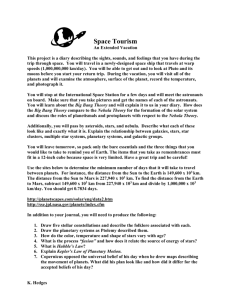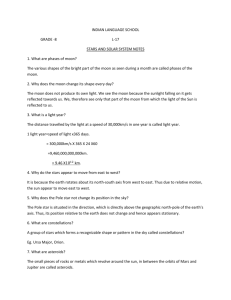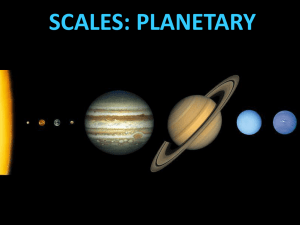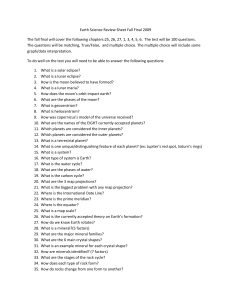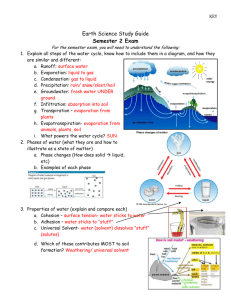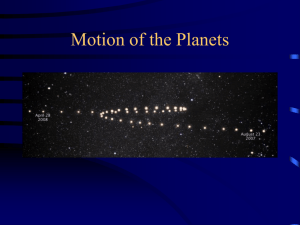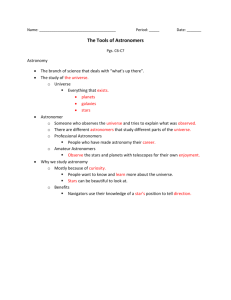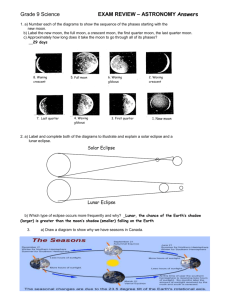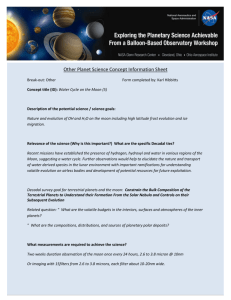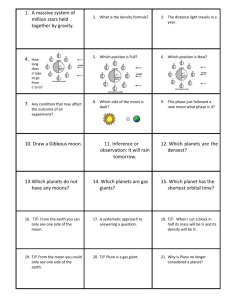Manfred Olson Planetarium
advertisement
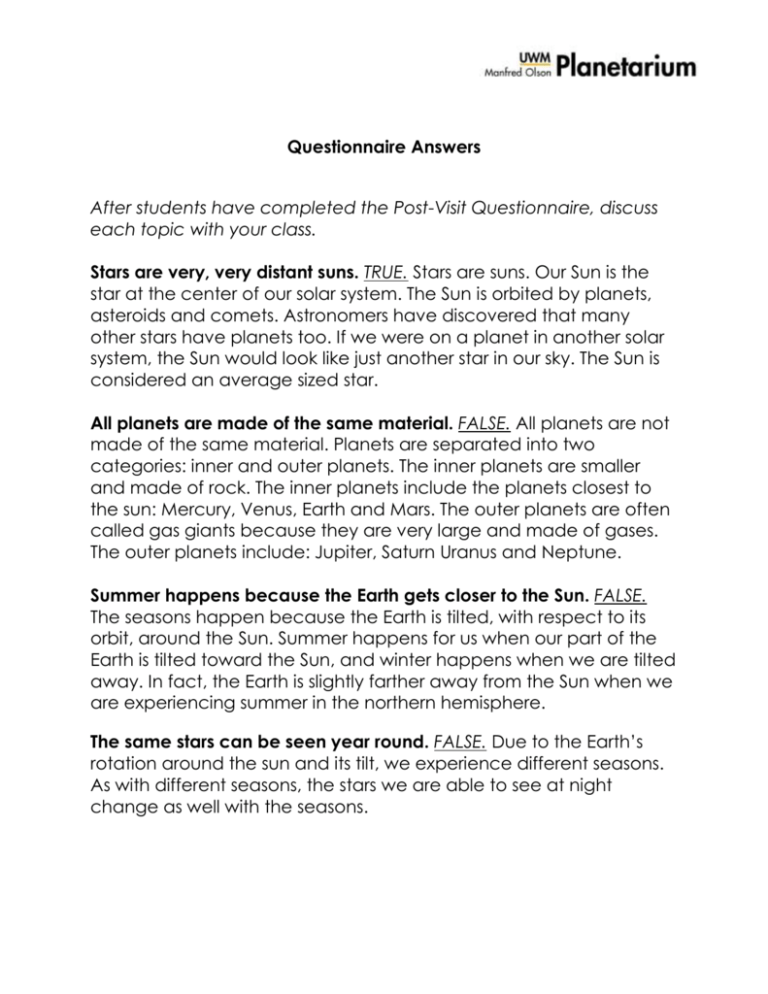
Questionnaire Answers After students have completed the Post-Visit Questionnaire, discuss each topic with your class. Stars are very, very distant suns. TRUE. Stars are suns. Our Sun is the star at the center of our solar system. The Sun is orbited by planets, asteroids and comets. Astronomers have discovered that many other stars have planets too. If we were on a planet in another solar system, the Sun would look like just another star in our sky. The Sun is considered an average sized star. All planets are made of the same material. FALSE. All planets are not made of the same material. Planets are separated into two categories: inner and outer planets. The inner planets are smaller and made of rock. The inner planets include the planets closest to the sun: Mercury, Venus, Earth and Mars. The outer planets are often called gas giants because they are very large and made of gases. The outer planets include: Jupiter, Saturn Uranus and Neptune. Summer happens because the Earth gets closer to the Sun. FALSE. The seasons happen because the Earth is tilted, with respect to its orbit, around the Sun. Summer happens for us when our part of the Earth is tilted toward the Sun, and winter happens when we are tilted away. In fact, the Earth is slightly farther away from the Sun when we are experiencing summer in the northern hemisphere. The same stars can be seen year round. FALSE. Due to the Earth’s rotation around the sun and its tilt, we experience different seasons. As with different seasons, the stars we are able to see at night change as well with the seasons. Stars appear to move throughout the night. TRUE. Stars look like they are moving from East to West during the night because the Earth is spinning (Rotating) from West to East. The Moon is visible every night. FALSE. The Moon has phases because it orbits the Earth. The Sun always illuminates half of the Moon, but depending on out position, we see anywhere from 0% of the illuminated side (New Moon) to 100% of the bright side (Full Moon) when the Moon is opposite from the Sun. Therefore, it is possible to see the Moon during the day and not at night. Stars begin, or are born, in clouds of gas and dust. (Grade 5) TRUE. Stars form inside nebulae. A nebula is a huge cloud, millions of miles in diameter, made up of hydrogen, helium, and tiny particles of dust. Each atom of matter attracts all the others by gravity. If the cloud is dense enough, after millions of years gravity can cause “clumps” to form inside the cloud massive enough to become a protostar. The protostar attracts more gas and dust, making it more massive. As it gets heavier, the gas inside is squeezed tightly and its temperature rises until the core ignites with nuclear fusion. The protostar becomes a star and begins to shine. Depending on their size, stars will burn steadily for millions or billions of years.
